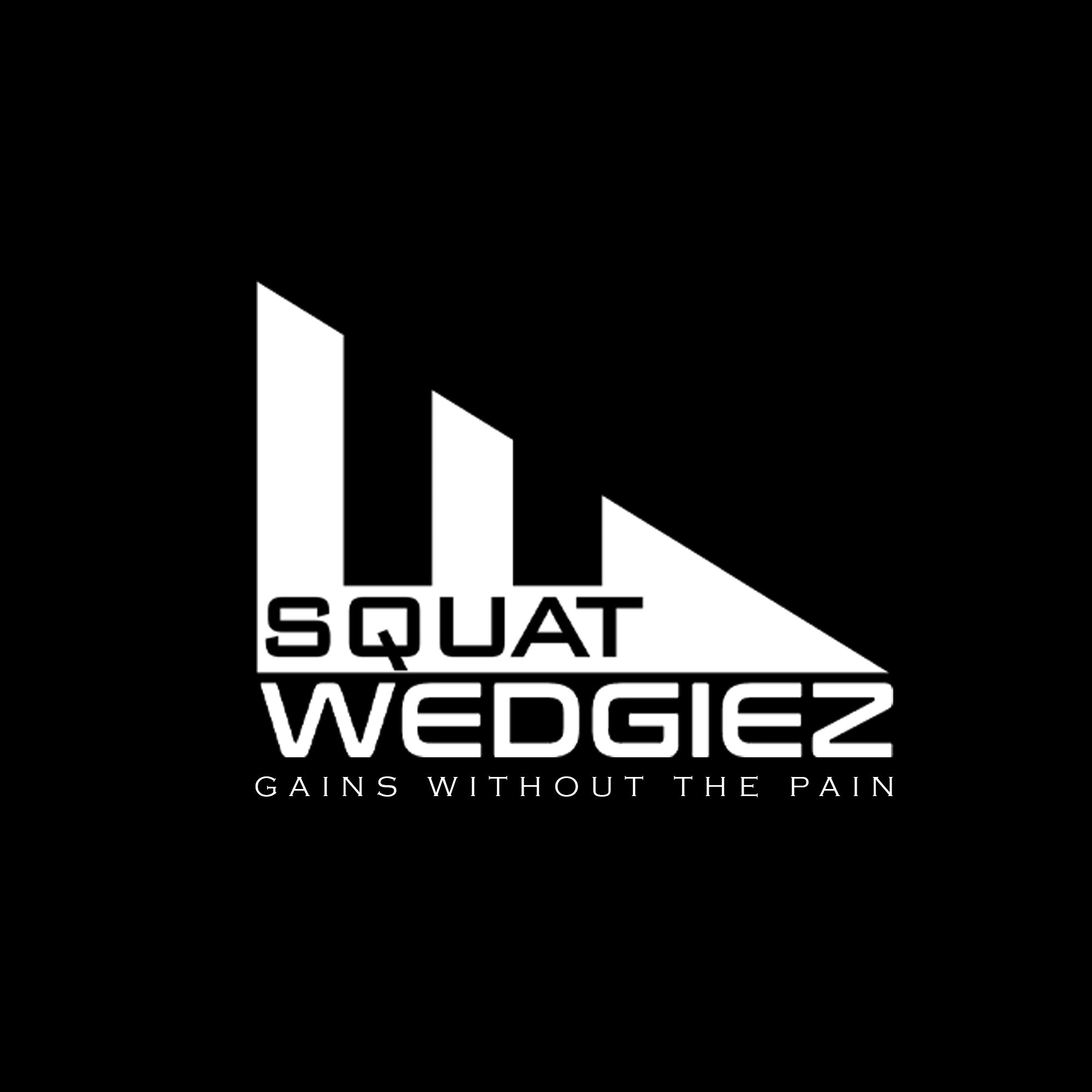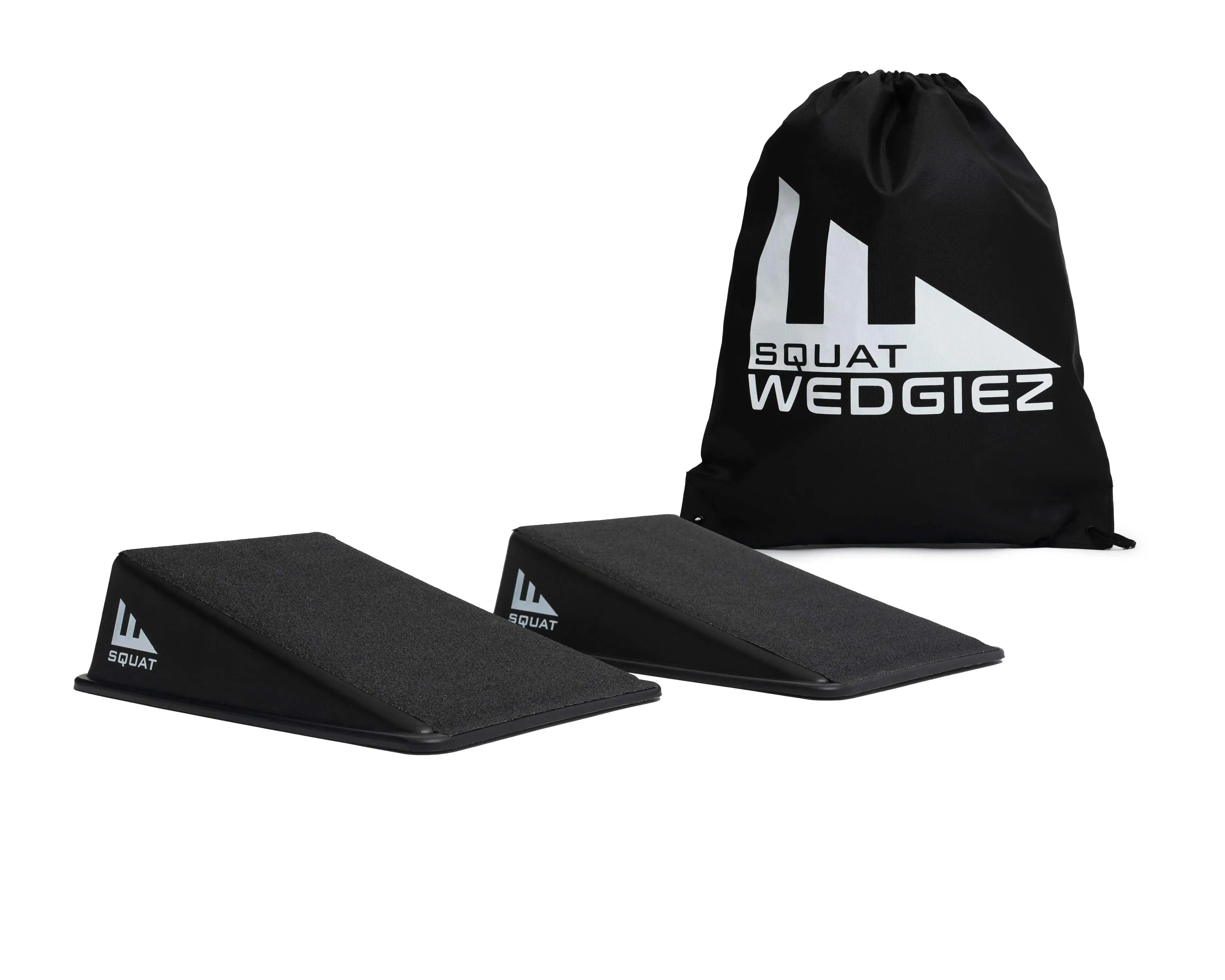

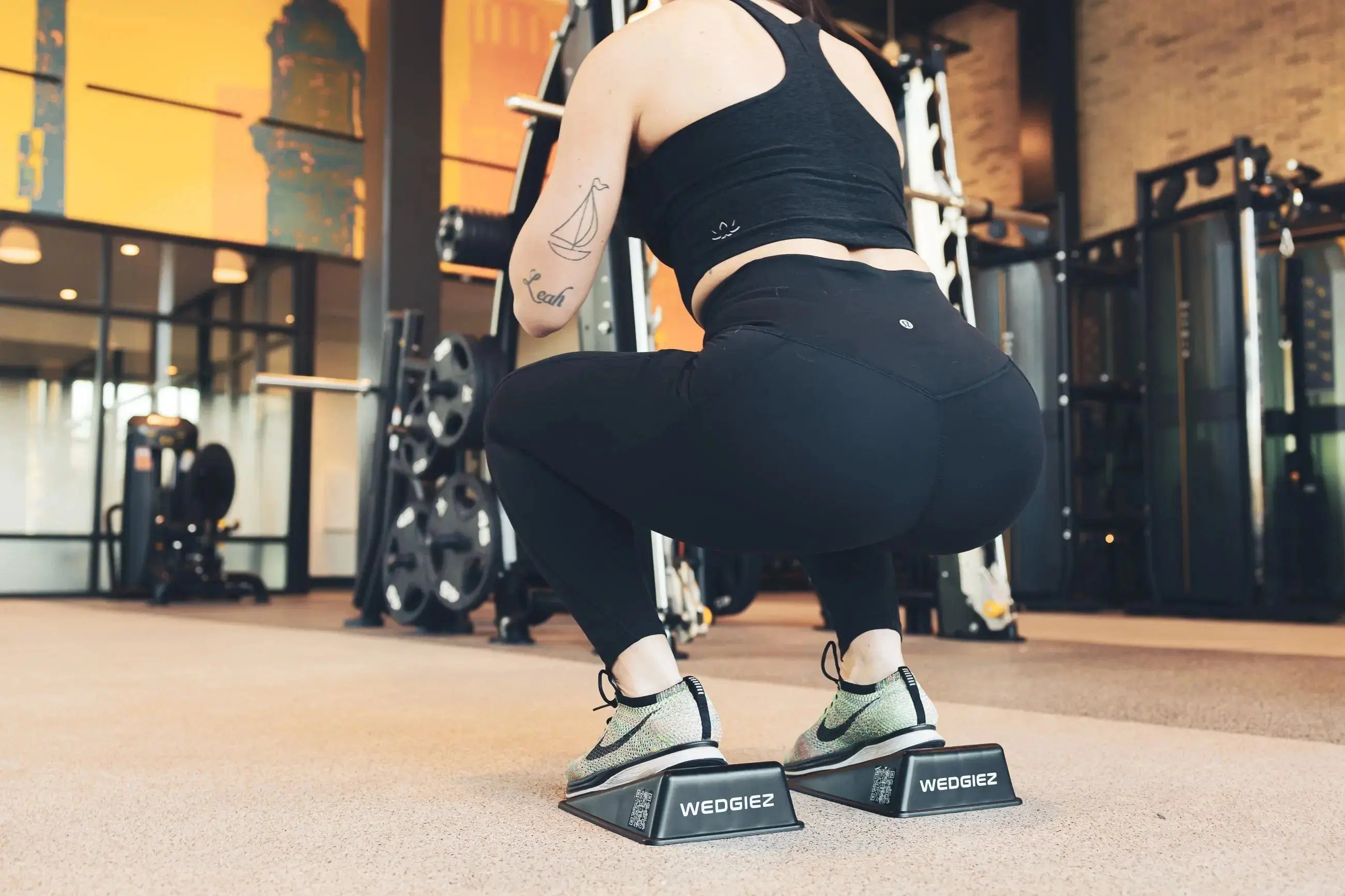
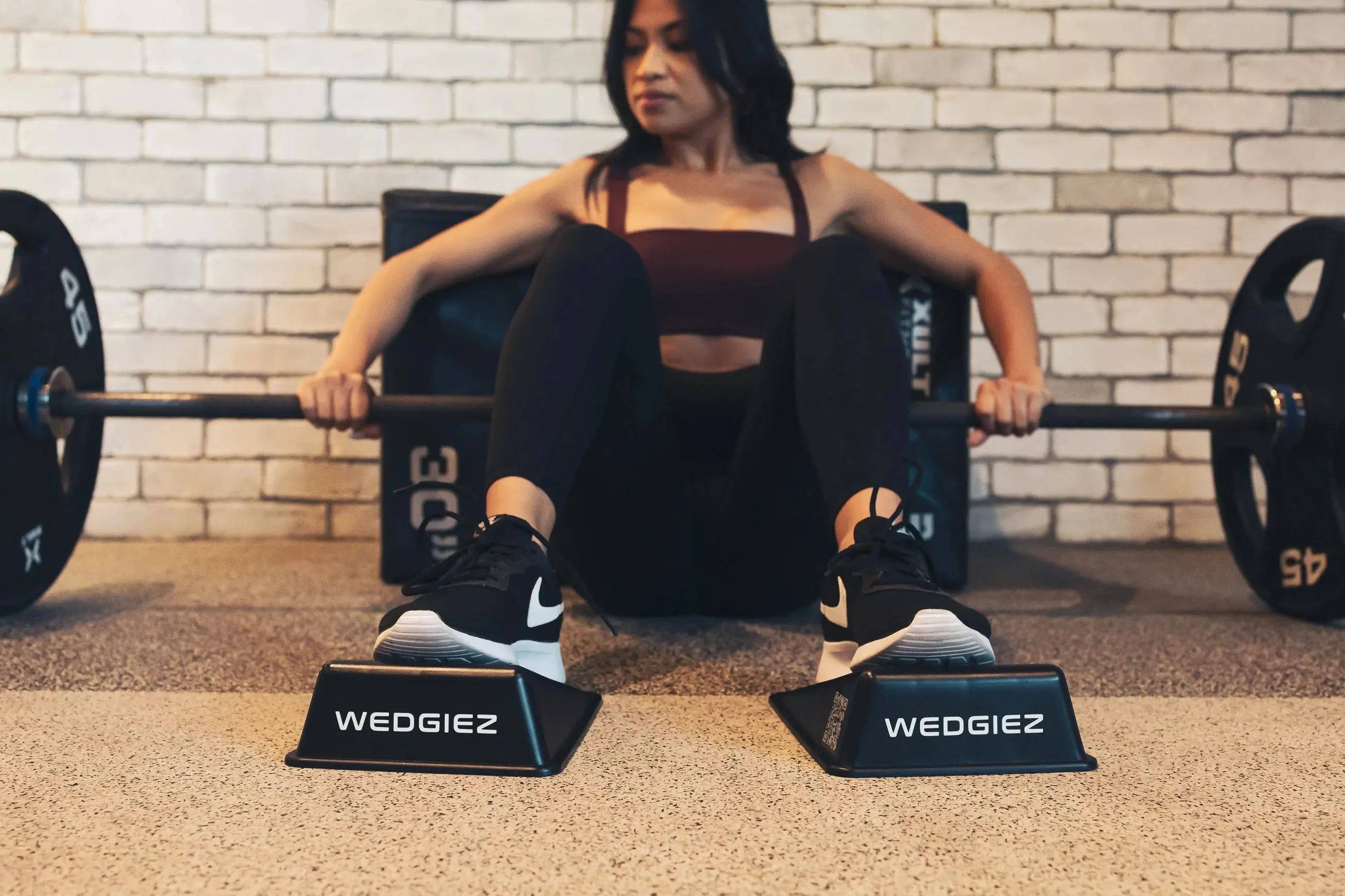
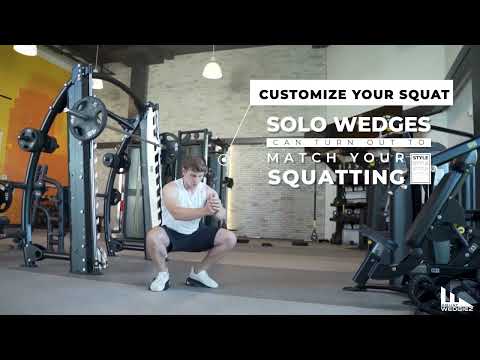
Refurbished Travel Wedgiez
Lightweight, durable squat wedges to elevate your leg workout
A refurbished product is one that has been used.
- Exercise video database
- Anti-inflammatory food shopping list & sleep routine
- Five workouts per week
Optimize your squat and leg workouts on the go with Travel Wedgiez.
Enhance your form, strengthen your knees, and alleviate back pain.
Whether you're at home, in the gym, or traveling, these squat wedges are your new essential fitness tool, empowering you to achieve your health and fitness goals.
- A Pair of Solo Wedges
- Workout Bag Included
- Holds Up To 800 lbs
- Up to 2.5 Inches of Heel Elevation
- 9.25" Long by 5" Wide, 11 oz each
- Anti-Slip, Gripping Surface
- Travel Friendly
- 15 Degree Incline
- Increase muscle activation in the lower body
- Strengthen your knees
- Reduce back pain in squats
- Reduce wrist pain in push-ups

Product Features

Extra grip to prevent slipping in your workouts.

Anti-Slip, Gripping Bottom Surface
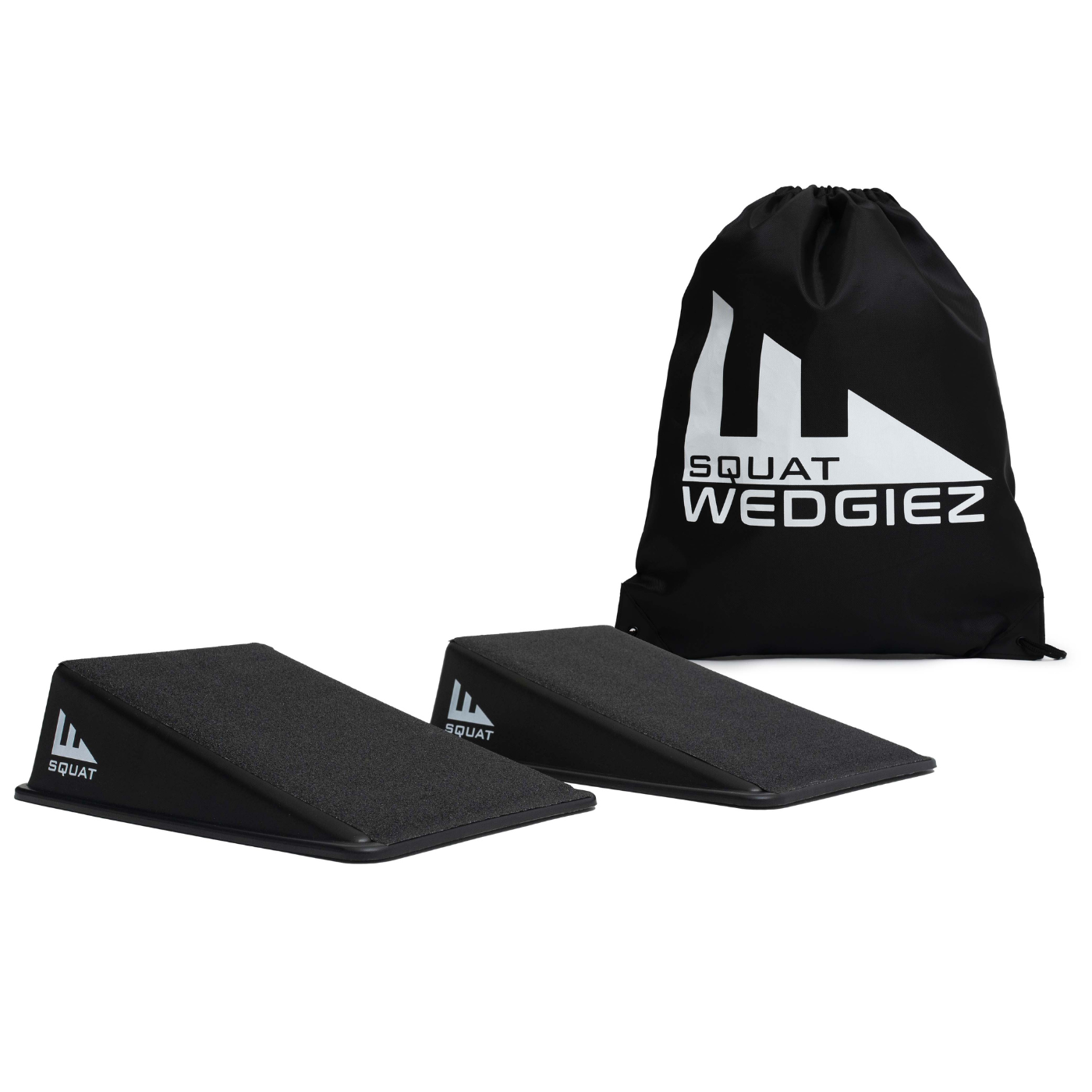
Travel-Friendly
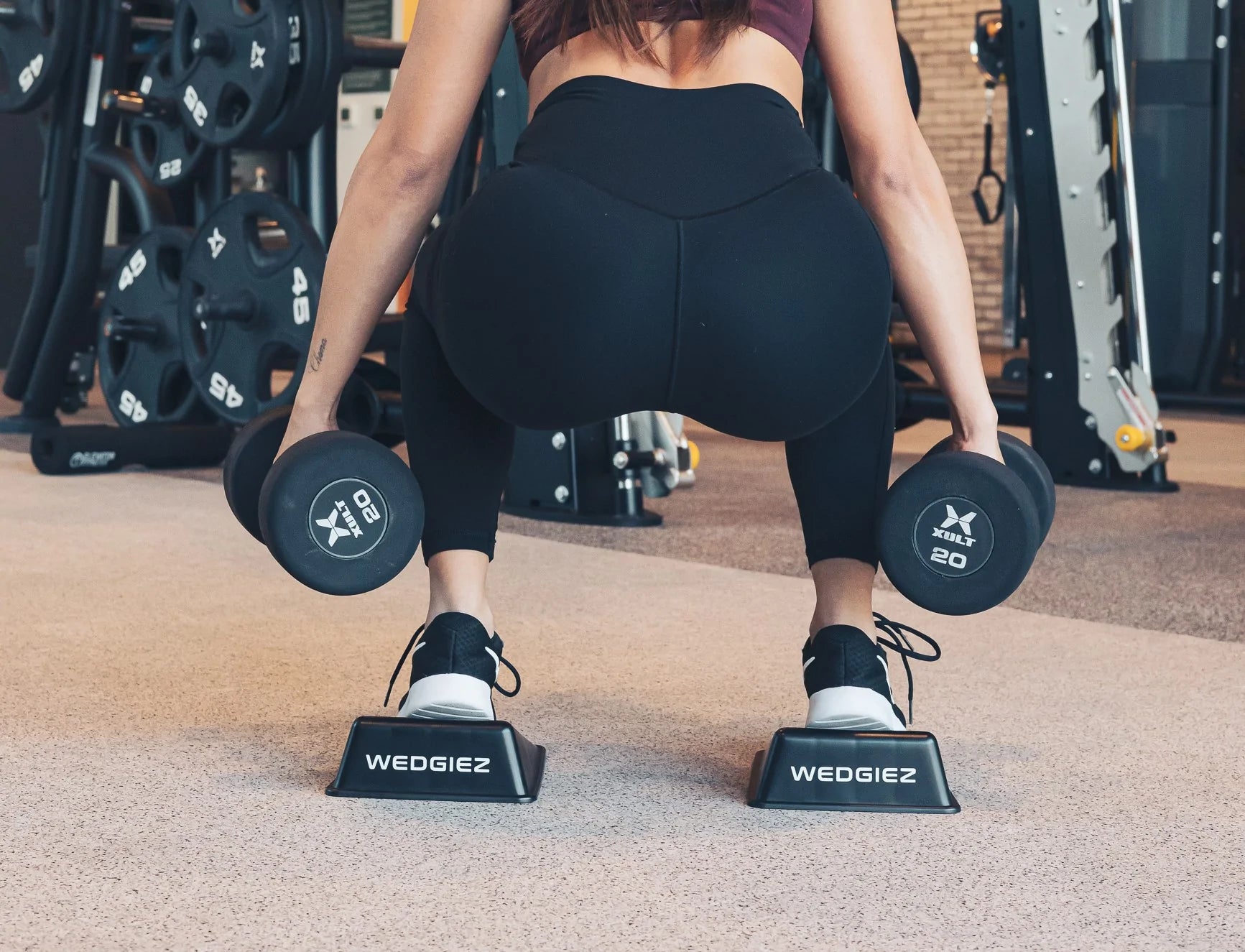
Heel-elevated squats have been shown to increase squat depth, enable greater muscle recruitment in the lower body, and allow you to target specific muscle groups (Sayers, et al. 2020, Jagessar, 2019, Oranchuk, et al. 2019).
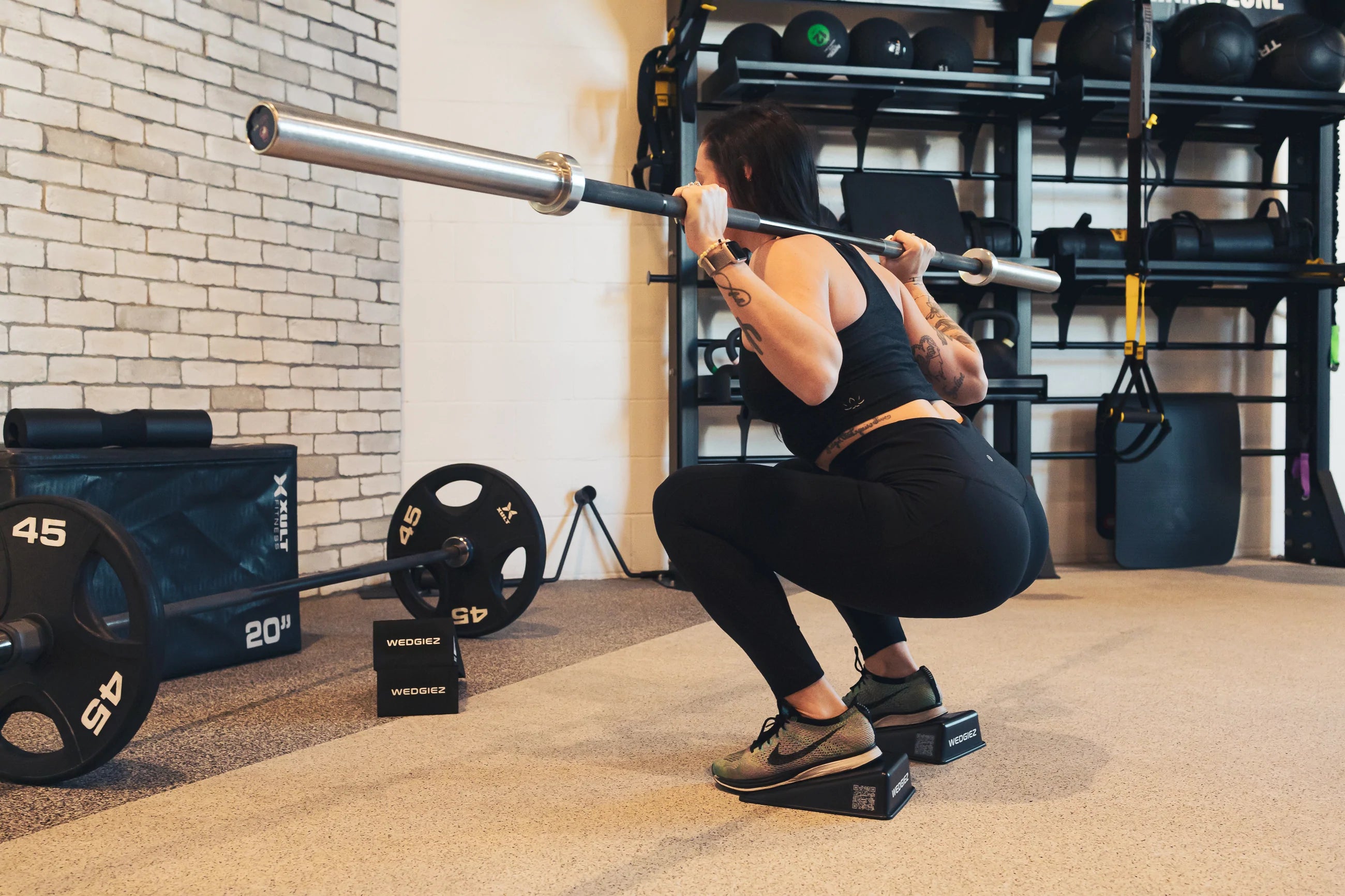
Elevating your heel with a squat wedge may reduce the risk of injury by keeping your posture more upright under load.

Keeping in mind the diverse exercise ecosystem, our squat wedges were designed with a silicone anti-slip grip that provides support and stability on every type of surface; the package also includes an extra grip for barefoot training.
Heel-elevated squats have been shown to increase squat depth, enable greater muscle recruitment in the lower body, and allow you to target specific muscle groups (Sayers, et al. 2020, Jagessar, 2019, Oranchuk, et al. 2019).
Elevating your heel with a squat wedge may reduce the risk of injury by keeping your posture more upright under load.
Keeping in mind the diverse exercise ecosystem, our squat wedges were designed with a silicone anti-slip grip that provides support and stability on every type of surface; the package also includes an extra grip for barefoot training.



FAQs
Questions we get from customers before and after their purchase.
1. What does elevating the heel do?
Elevating the heel shifts your center of mass backward so that you have more space for your knees to go forward. This will allow for a deeper squat movement that will target the thighs and glutes more compared to a partial range of motion squat.
Also, if you struggle to keep the heels down while squatting, adding a wedge underneath them can teach you how to feel your heels. The feeling of the ground in contact with your heel will improve your balance and give your brain the sensory information it needs to perform the squat optimally.
2. How high should you elevate your heel?
You should elevate the heel as much as you need so that your heels aren't lifting when squatting, but not at the cost of pain. For some, elevating the heel too much can cause slight knee pain due to the extra loading on the knee.If you feel discomfort, reduce the load by performing an assisted variation of the exercise or decreasing the range of motion. Over time, the joints and muscles will become stronger, allowing you to perform the full range of motion movements.
3. What does elevating the forefoot do?
Elevating the forefoot shifts your center of mass forward giving you more space for your hips and knees to pull backward. Having the toes elevated can prevent excessive forward knee movement in a Romanian deadlift or hip thrust. Also, elevating the forefoot will extend the toes, which will improve ankle mobility.
4. How high should you elevate your forefoot?
You should elevate the forefoot as much as you need so that your knees don't track over your toes during a hip hinge exercise. If the position feels off balanced, elevate the forefoot less. For calf raises, elevate the forefoot enough to feel a calf stretch.
5. Can't I just use plates?
Weight plates may elevate your heel, but they don’t bring your center of mass backward; they put more pressure on your forefoot, which is not the goal. The purpose of a heel elevated squat is to shift your weight backward so that the knees have more space to go forward.Also, you have to stack three five-pound plates to get the same heel elevation as Squat Wedgiez. Weight plates leave gaps between your feet and the ground, decreasing your balance and reducing the sensory information needed for your ankle and foot to work optimally.
